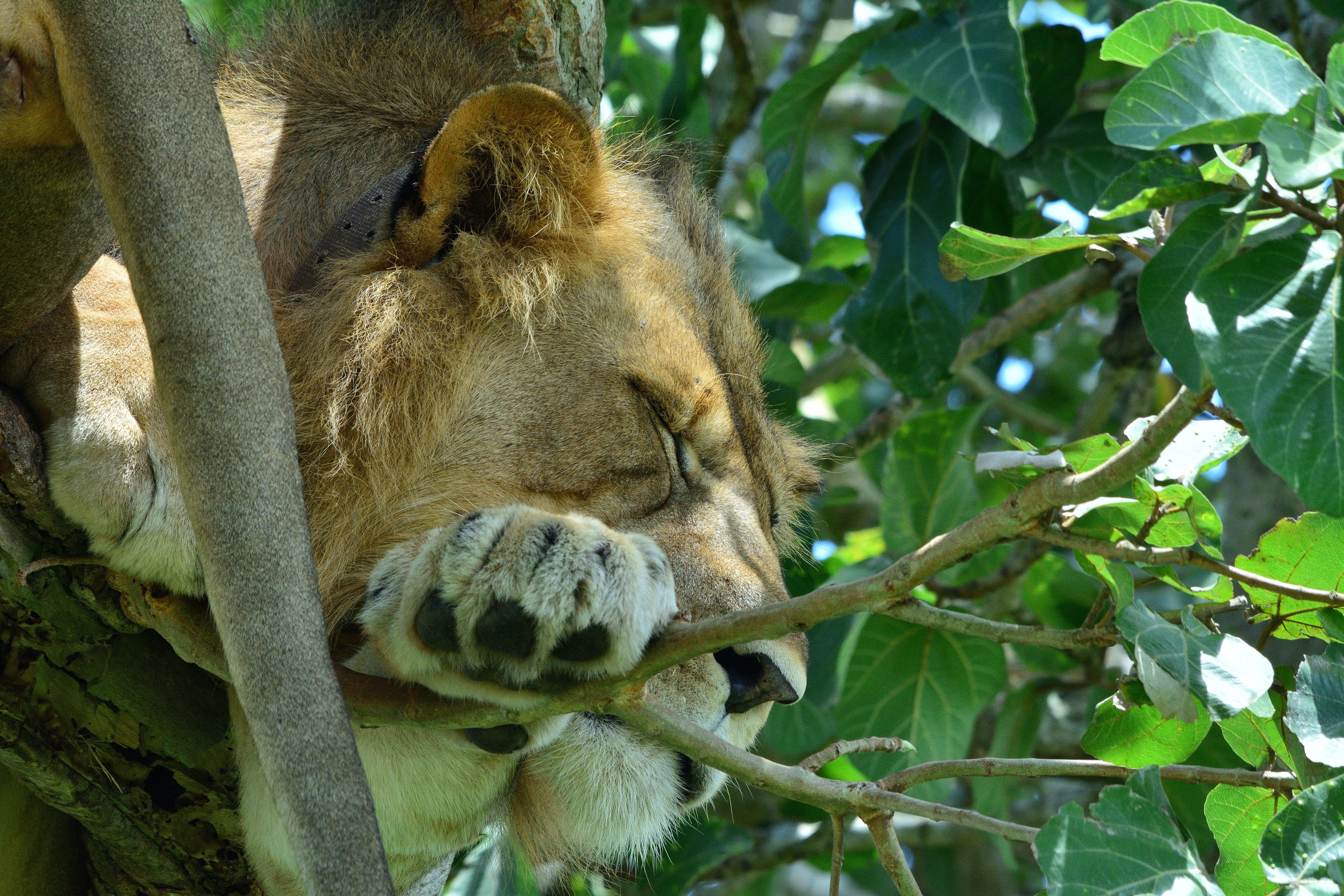Uganda’s Ishahsa lions roar again
After a horrific poaching incident, the authorities have taken new steps to protect the unique tree-climbing lions of Uganda

In the west of Uganda at Ishasha, where the long branches of the fig trees provide shade and safety in the savannah of Queen Elizabeth National Park, is a sight seen in only two places in Africa: tree-climbing prides of lions.
These have been a source of fascination for scientists and tourists for decades but, sadly yet also perhaps inevitably, they have also caught the interest of those who are more interested in poaching than studying them.
Last year six dead lions were found in a discovery that generated headlines around the world. All had had been poisoned, their heads and paws cut off, and their carcasses left to attract vultures that were then also killed by the poachers for their body parts.
Yet the find, grisly that it was and a blow to efforts to protect Africa’s dwindling lion populations, prompted one of the most extensive wildlife-crime investigations ever seen in Uganda, and a concerted response by the country’s wildlife service to ensure such an act could not be repeated.
The result is a case which, despite its initial warning sign, has shown the growing effectiveness of the authorities in the country against those who target its endangered species, in this case one that has the added importance of attracting vital tourism revenue into an area where many communities increasingly rely on such funds for their economic futures.
Bashir Hangi, of the Uganda Wildlife Authority (UWA), explained how the Ugandan government had taken steps to protect the area with stealth cameras and drones employed in the park.
More security, he said, is now planned. “We have animals because UWA is protecting them. We have stealth cameras already but we need more in all the parks,” he explained. “It is a big project that requires a lot of money over a period of time. We have ventured into the use of drones to monitor parks but they are still few.”
In addition the local office of the conservation NGO the Wildlife Conservation Society sent in teams to remove any snares found in the park and has a programme to reduce tensions with the lions cause by eating the livestock of local farmers by building carnivore-proof pens.
These present the lions from attacking the animals, and therefore prevent retaliatory killings by angry herders.
However, it is the case of the search for those responsible for the killing of the six lions last March that best illustrates the steps being taken to prevent repeat episodes.
The government slapped a US$2,500 reward on any information that would lead to arrests. A task force consisting of the Uganda Police Force, the Uganda People’s Defence Forest and UWA officers was put together to find those responsibilities.
This month that effort resulted in two local men being found guilty of the crime. Vincent Tumuhiirwe and Robert Ariyo were convicted of not only poisoning the lions but also of killing 10 vultures and of hunting a kob without a license after the country’s Standards, Utilities and Wildlife Court heard evidence from 14 witnesses.
When arrested, they had been found in possession of four lion heads, fifteen lion legs, one lion tail, fifteen paws and a three-litre jerrycan of lion fats, as well as an agricultural pesticide harmful to animals.
Gad Rugaaju Ahimbisibwe, a local resident Deputy Resident District Commissioner, explained: “After being arrested, the suspects admitted to slaughtering the lions for the teeth and claws, which to them is a big trade. They told us they did it for business. A lion’s head is sold at Shs40,000 (US$10), while its fat is sold at Shs60,000 (US$15), and nails and heart sold at a yet-to-be known price.”
The Ishasha population consists of between 20-30 individuals. Across the continent here are now fewer than an estimated 25,000 in Africa, lions are listed as vulnerable to extinction by the International Union for the Conservation of Nature, which determines the conservation status of species.
For every lion in the wild, there are 14 African elephants, and there are 15 Western lowland gorillas. There are also more rhinos than lions remaining in Africa.
However, for the lions in Ishasha there has been more good news in addition to the steps taken by the authorities to protect them and punish those seeking to poach their remaining population.
This year several new cubs were born, who will now one day also join their fellows in their pride to climb up and laze on the branches of the Ishasha fig trees as their forebears have done for decades.
Join our commenting forum
Join thought-provoking conversations, follow other Independent readers and see their replies
Comments
Bookmark popover
Removed from bookmarks